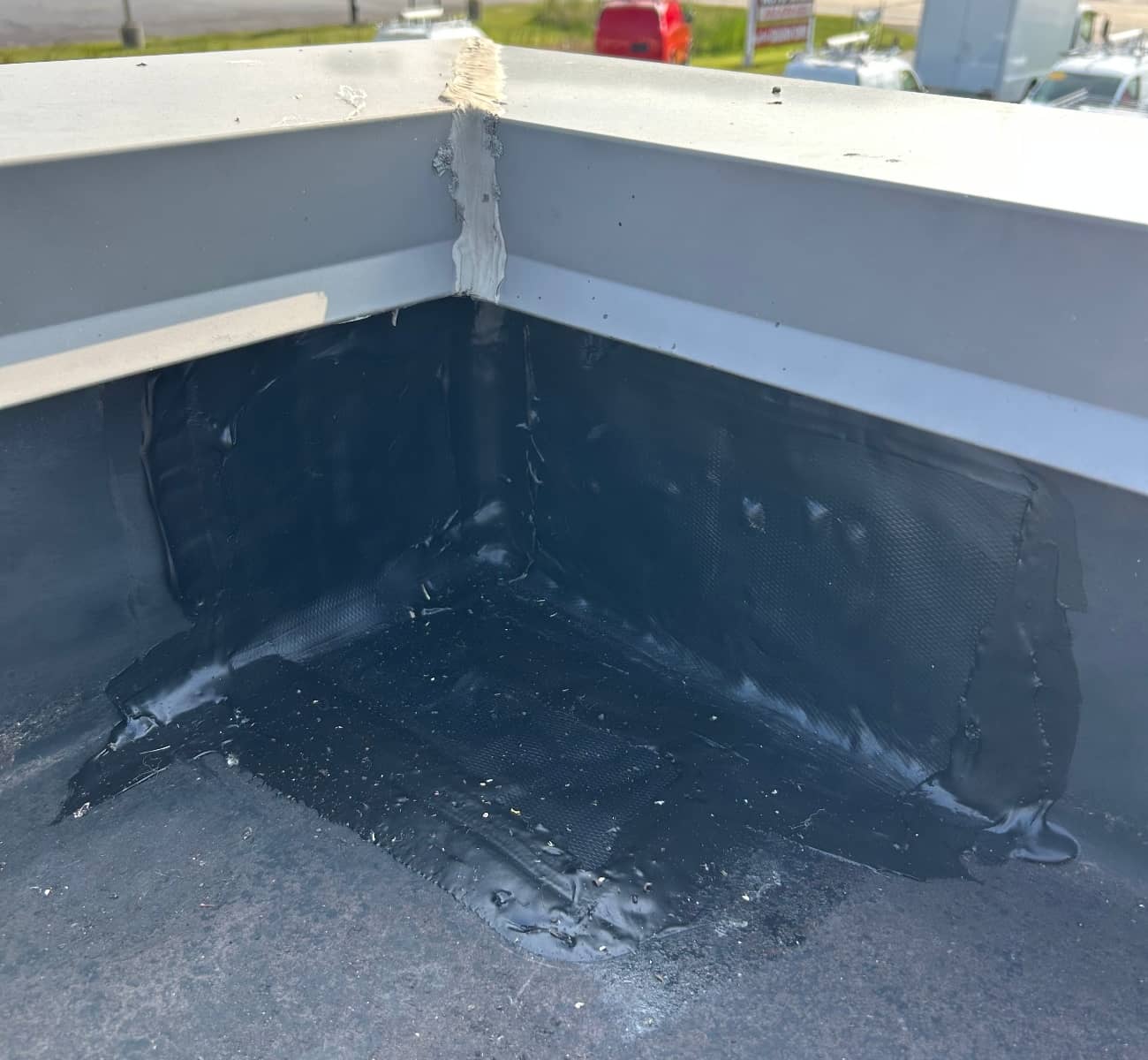With their sleek look and attractive price point, flat roofs are a popular choice for business owners seeking an economical roofing system.
Flat roofs are energy-efficient and offer more space to use, giving them an advantage over sloping roofs. Since they’re almost perfectly flat, maintenance isn’t too difficult, but you’ll need to do it to avoid common roofing issues.
While flat roofs offer several benefits, they’re prone to various upkeep and repairs. Without a slope for water to run off, flat roofs require seasonal maintenance to keep them leak-free and functional.
Regular inspections and care are essential for preserving your flat roof for long-term use and enjoyment. Here are some steps and important tips to keep up with your flat roof maintenance and avoid potential issues.
7 Tips For Flat Roof Maintenance
1. Use Long-Lasting Weather-Resistant Materials
The best way to keep your flat roof serviceable is to build it using the proper materials. Materials like modified bitumen, EPDM, PVC, and TPO are robust and long-lasting. The material you choose for the roof should also be energy efficient, considering your area’s specific temperatures. That’s why choosing a flat roofing contractor who’s experienced with roof repairs and installations is important.
2. Remove Any Debris
One of the most important ways to avoid potential issues with a flat roof is to keep it free of debris like leaves, branches, and dirt. Regularly inspecting your roof and removing debris can prevent clogs in your drainage system and help prevent structural damage.
In addition to regular checks on your roof, be mindful of weather-related events, such as wind and snowstorms, that can create unexpected weight on your flat roof.
3. Address Water Ponding and Drainage Issues
Flat roofs are not 100% flat, but they are flat enough that water ponding can easily develop. Water accumulation can eventually cause leakage, deteriorate materials, and undermine the structure of your roof.
The easiest way to minimize water pooling is to ensure your roof has proper drainage in place, including the correct gutters and scuppers. Have a professional roofer regularly inspect your roof and keep gutters and scuppers free of obstructions caused by leaves and dirt.
If, over time, you see that water pooling is a problem, consider adding additional drains or tapering insulation to guide water toward the drains.
4. Check For Membrane Damage
Unlike a sloping roof, a flat roof won’t be able to rely on gravity to repel water. Instead, it will have a waterproof membrane covering that can ideally last between 15 and 25 years.
These durable, weather-resistant coverings are composed of strong materials, such as plastic, rubber, and modified bitumen. Over time, however, they can become vulnerable to tears, punctures, blistering, and breaks.
Roofing membranes are also often damaged by falling debris. If technicians need to walk on the roof to work with the HVAC system, foot traffic can also cause eventual breaks to the membrane, along with the wear and tear that comes from necessary maintenance or repair work. Installing walking pads can help with this issue.
Additionally, your roof’s protective membrane can become blistered from exposure to the sunlight and other weather conditions. Without repair, these blisters can collect water and cause leaks.
Keep an eye on the membrane condition and fix damaged areas as soon as possible, to avoid replacing the full membrane in the future.
5. Recoat and Reseal Repeatedly

Your flat roof’s protective coating can shield it from elements like harsh sunlight and heat. Regardless of which reflective surface you choose, it can also provide energy-saving benefits. Your home will stay cooler when thermal energy bounces off your roof and isn’t absorbed by it.
Over time, a flat roof will require resealing to extend its life. You can reseal the roof once every 2 to 3 years. Recoating every 5 to 10 years depending on the environmental conditions to which your roof is exposed annually is optimal.
Before resealing your roof, a contractor will prepare it by making sure it’s clear of dirt and debris. One of those methods is power washing, but you need to ensure that the roof has completely dried out before applying the sealing.
Maintain a schedule to check for cracks and tears. Recoating and resealing can certainly lengthen the lifetime of your roof.
6. Address Algae and Moss Growth
Although mold rarely grows on roofs, you may have to deal with slimy algae streaks from time to time.
To prevent algae from growing, create a sunny, shade-free environment on the surface. Trim back any branches that hover over the roof surface, and keep it as dry as possible, removing any debris that accumulates.
In addition to algae growth, flat roofs can become hosts to spongy mats of green moss that can weaken the roofing materials over time and eventually cause leaks. You can avoid moss and algae problems by clearing out your gutters frequently to discourage water buildup.
Applying zinc and copper strips to the roof also helps deter moss growth. As water flows over these strips, the ions released will prevent moss expansion.
7. Prevent Thermal Expansion and Contraction
As the roofing materials expand during the blistering heat of hot summer days and contract when the temperature cools back down in the evenings, your roof can become warped, develop cracks, and experience overall degradation.
While it’s impossible to avoid entirely, the best way to combat this issue is to construct your roof with high-quality materials that are appropriate for the local climate.
Make sure your roof has sufficient insulation to protect it from thermal expansion and contraction. The roof design should also include expansion gaps to relieve structural stress, which may require additional layers of protective materials.
